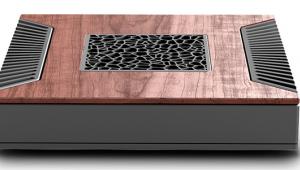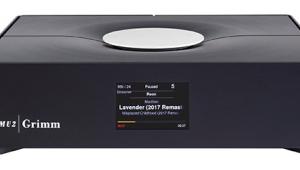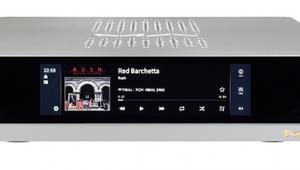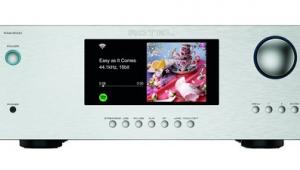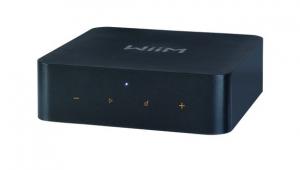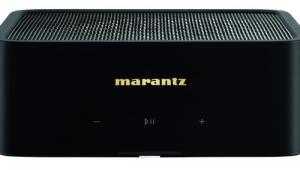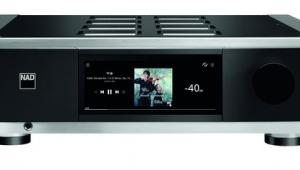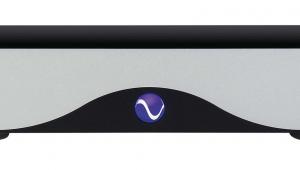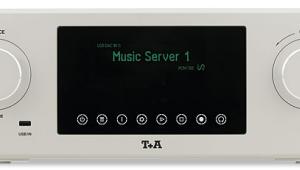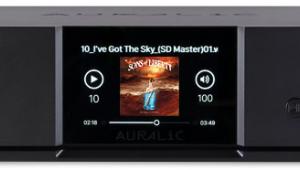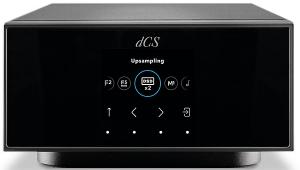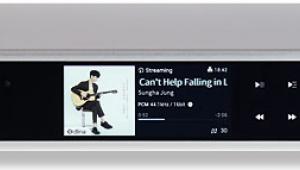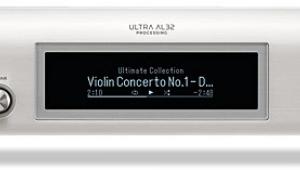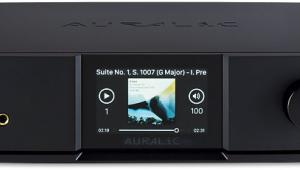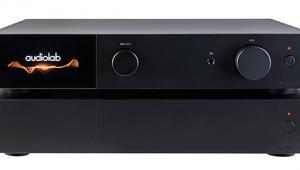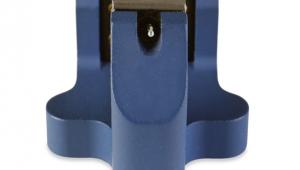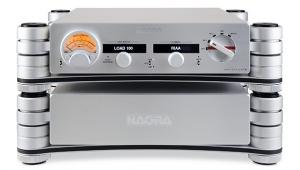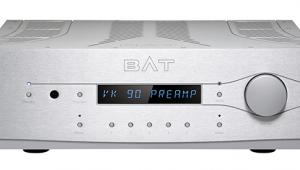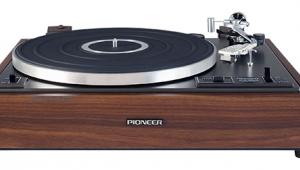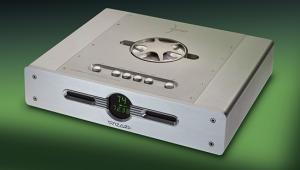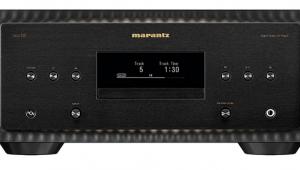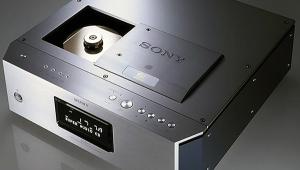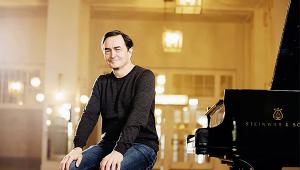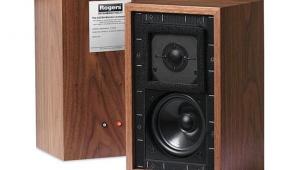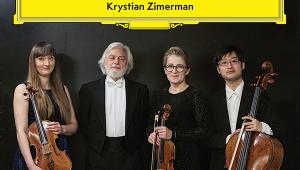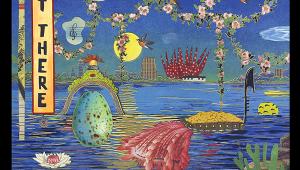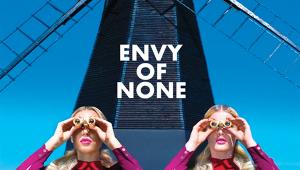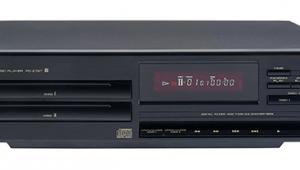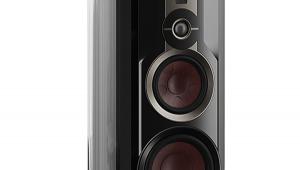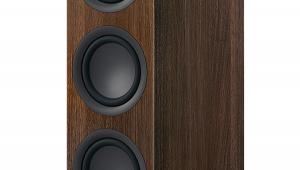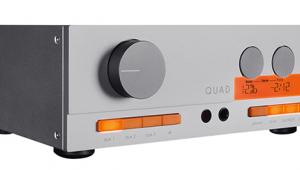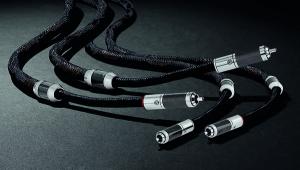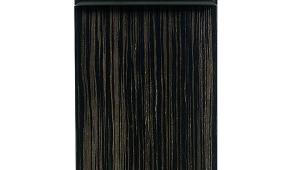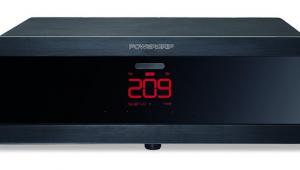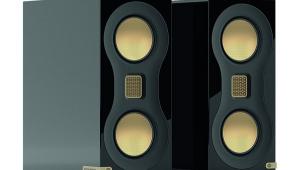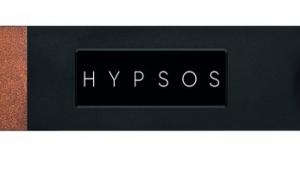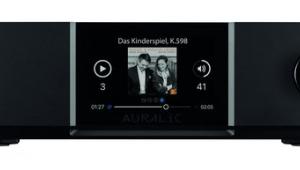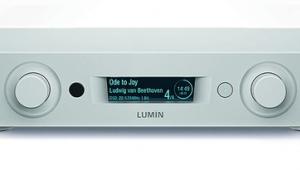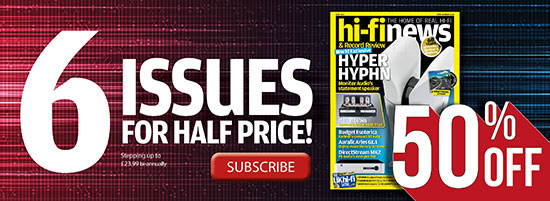dCS Varèse streamer/DAC
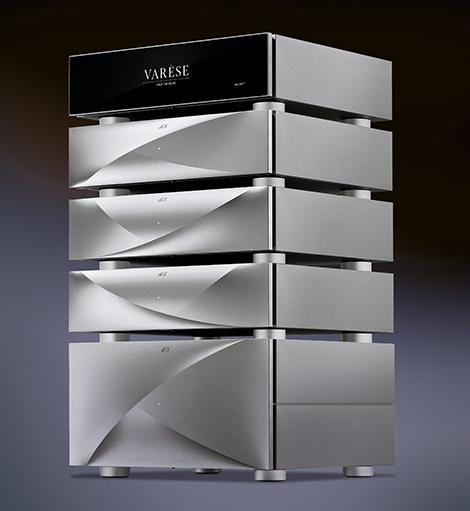
 The French/American composer Edgard Varèse, from whom this latest dCS digital product takes its name, described his music as ‘organised sound’, challenging reactionary critics who likened his compositions to ‘no more than noise’ by saying ‘what is music but organised noises?’.
The French/American composer Edgard Varèse, from whom this latest dCS digital product takes its name, described his music as ‘organised sound’, challenging reactionary critics who likened his compositions to ‘no more than noise’ by saying ‘what is music but organised noises?’.
Well, clearly dCS feels those noises need quite a bit of organising, for its latest digital music front-end comprises no fewer than five units, for a total price of £217,500, and a further ‘box’, an SACD/CD transport, to come this year to swell the stack again. Somewhat understandably, the company says the Varèse set-up will only be made in limited quantities.
Standing orderFive boxes, just to perform the functions of network playback and DAC? We’re a long way from the familiar idea of a conventional digital-to-analogue converter here, and indeed from models such as the company’s Bartók, Rossini and Vivaldi [HFN Apr ’23, Sep ’19 and Jun ’22], the last of which, as the Vivaldi One, has been the digital workhorse of the HFN reference system, latterly in its upgraded APEX form, for a very long time. So, what’s going on with this new ‘Music System’, occupying an entire rack at the back of the room? And indeed, where do we start?
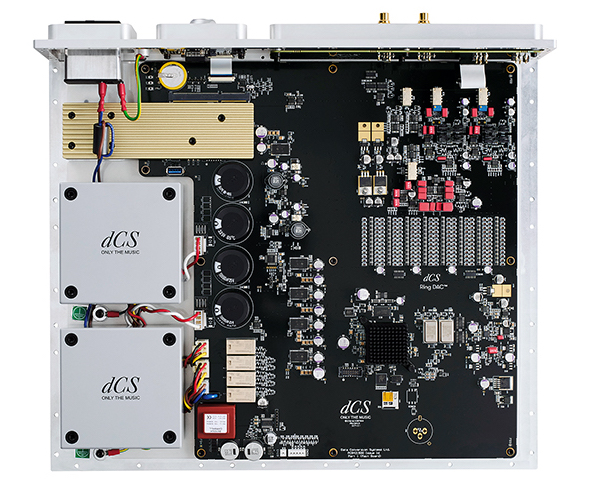
Well, the Varèse system comprises a User Interface – the unit with the colour, touch-sensitive display – at £20,000; the £75,000 Core, which does all the heavy (DSP) lifting; a pair of Mono DACs at £90,000; and a separate Master Clock, adding £32,500 to the bill. And if all those boxes suggest a nightmare of cabling and fault-finding when hooking it all up, dCS’s designers have that sorted: a unified ‘bus’ system links everything together in a single run of cables from unit to unit.
Called ACTUS (Audio Control & Timing Unified System), this feeds out from the Core to the other components via custom cables using multipin connectors supporting six twisted pairs of copper cable. These carry asynchronous and error-corrected audio signals, control data and that master clock signal, sent via the new dCS Tomix protocol introduced with the Varèse stack, of which more later. In purely practical terms, connecting up this potentially fiendish and complex system is actually blessedly simple.
Master of ceremoniesAt the heart of the Varèse – and the largest of these solid alloy enclosures, all with eye-catching, sculpted fascias – is the Core. The other components meet here via eight of those multicore connectors on its rear panel, and it handles most of the signal processing for the whole system before the data is output to the Varèse’s two Mono DACs. In addition, the Core has a USB-A input for external drives, plus an Ethernet connection for access to streaming services and music on local storage. The platform will also support extra modules via three internal slots. The initial expansion module is expected in the first quarter of 2025 and will include three AES inputs, a USB-B computer port plus Word clock and S/PDIF outputs, and RS232 and 12V system triggers.
Next up is the User Interface, which provides access to the setup and operation of the Varèse system as well as that huge display, which has touchscreen operation. A Bluetooth antenna connects to the ring-shaped, rechargeable remote handset, and the User Interface also provides access to AirPlay and Google Cast services. However, this unit is very simple when it comes to connectivity: aside from that antenna, there’s just a single ACTUS data socket on its rear panel.
The Master Clock is similarly elegant in implementation. It’s designed to work with the Core and the Mono DACs to deliver increased performance, by providing an ultra-low jitter reference to which the Varèse system synchronises and connects to the Core via another ACTUS cable and a dedicated ‘clock socket’. Again, the ACTUS port is the only connection on the Master Clock, aside from the IEC mains input found on all the Varèse units, and like the other components there’s a button under the front edge for on/standby functions.
Two’s companyThe Mono DACs, while unusual in themselves, are the most recognisable components in terms of connectivity. Yes, the only inputs are a single ACTUS socket on each DAC, but at least the outputs are standard RCAs and XLRs – two of each on each DAC, which arrive pre-designated as left and right units. Within each unit is the latest iteration of dCS’s Ring DAC technology, now named Differential Ring DAC [see boxout]. Holding all this together is dCS’s Tomix clocking technology, synchronising the timing within both left and right mono DACs.

The Varèse will play music from UPnP sources such as NAS drives, as well as streaming services including Qobuz, Spotify and Tidal Connect. These can be accessed via dCS’s new Mosaic ACTUS app, which also introduces plenty of setup flexibility [see boxout]. You can go deep into the operation of the Varèse system, or just use it as is, when it demonstrates dCS’s intention to create an ultra-high-end player system that’s simple to use.
Firmware updates are delivered ‘over the air’ via the Core’s Ethernet port and, while the review process was underway, the Varèse became Roon Ready, allowing yet another way to operate it – choose between touchscreen, remote handset, app and now Roon.
![]() Vanishing act
Vanishing act
Connected to the Constellation/Wilson Audio Alexx V SP reference system in the HFN listening room, the Varèse immediately created an impression of – well, nothing. Never have we known a set-up so capable of dispelling any thoughts of music being played through a hi-fi system, to the extent that it’s impossible to drill down and analyse exactly what this five-box front-end is doing so well.
Even with a familiar and much-used test-track such as Lake Street Dive’s take on the Jackson 5 hit ‘I Want You Back’, from the band’s Fun Machine EP [Signature Sounds SIG 2048], the impression was simply one of ‘rightness’. Everything sounded as it should, from the presence of the musicians to the sting of cymbals and the breath in Mike Olson’s trumpet, to the resonance of Bridget Kearney’s upright bass and, of course, the soulful vocals of Rachael Price, so palpably solid despite being carved in nothing but air. There was absolute focus to the sound of this stunningly unadorned recording, and the performers were just there, with not a hint of colouration being introduced.
Fantastique soundsAfter just that one track, it would be possible to identify what this new dCS digital system achieves: in plain terms, it makes everything else, analogue or digital, sound just a bit fake, in that you can tell what the electronics are doing. There’s a lot more going on in this five-box system than any other digital front-end you could name, but it’s all completely inaudible. Yes, you could play around with the signal path and digital processing options on offer – you’ve spent all that money on them, so why not? – but the effects will be minimal by comparison with the essential impact of what the Varèse presents.

It doesn’t take long for one’s analytical faculties to be put to one side as something akin to a sense of wonder sets in. Playing the Cleveland Orchestra/Welser-Möst recording of Berlioz’s Symphonie Fantastique [Orchestra’s own label, TCO0013D, 96kHz/24-bit], any thoughts of this being a test warhorse, judging its performance by comparison with others, were soon dispelled. Instead, the attention was on the convincing picture being created of the orchestra in a concert hall.
Even in the opening movement there was such powerful weight in the low strings, and so strong a feeling of the air being energised by the soundwaves, that we were instantly captivated. The strings were entirely fluid, with both rosiny bite and that effortless glide, just as the woodwinds were magnificent and the brass startling thanks to the Varèse’s speed and attack. And that soundstage! The soft rumble of the timpani was clear and ominous, and the drama of the music wonderfully conjured – but above all the whole thing was just totally effortless, the music flowing unhindered.
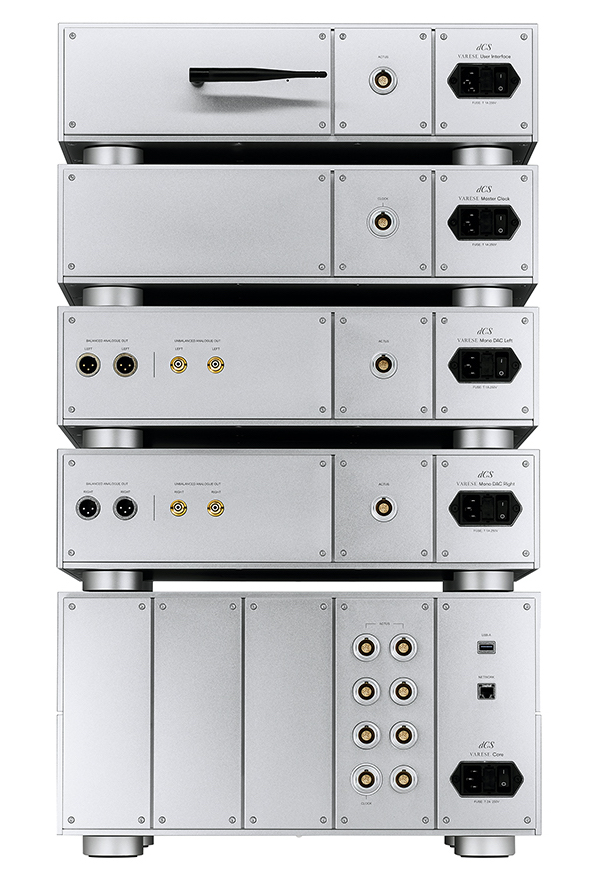
Reading dCS’s press information while listening to the Varèse stack saw another piece of this five-piece jigsaw falling into place. Yes, the intention of the designers was to create a high-end digital playback system that was as simple and intuitive as possible to operate, but this set-up goes further in that it’s so damn easy to listen to. Nothing about the sound catches the attention, or makes you wonder whether an element could be handled just that little bit better, or even differently. Instead, the focus is thrown entirely on the performance and the recording, which is absolutely as it should be.
Feeling freshWith the Varèse, it’d be so easy to fall into the old clichés about veils being lifted, windows cleaned, and doors opened, but instead the pleasure of listening to it is to do with losing yourself in the music. The 35th anniversary release of Eric Clapton’s Slowhand album [Polydor 0600753407202] came up fresh right from the opening chords of his cover of ‘Cocaine’, the guitar and vocals so characterful as they occupied their space in the soundstage. Later on in the set, the goodtime bounce of ‘Lay Down Sally’ simply boogied into the room, those backing vocals by Marcy Levy and Yvonne Elliman bell-like and oh-so crisp. The depth of texture in what are relatively simple mixes was just spectacular.
‘I should have listened...’Stepping things up in scale with the ‘Funeral For A Friend/Love Lies Bleeding’ sequence from Elton John’s Goodbye Yellow Brick Road [40th anniversary remaster, Mercury/Universal 375 858-9], and the intensity of the sonic picture the Varèse stack created was such that the effect was room-filling, almost surround-like.

The ARP synthesiser growled and flew high, and the classic Elton John band – Dee Murray on bass, Davey Johnstone on guitar and especially the punchy, weighty drums of Nigel Olsson – drove things hard, as vibrant as when they were recorded all those years ago. Yes, times and some attitudes have changed, but the sound throughout this set is sensational thanks to Gus Dudgeon’s original production and Bob Ludwig’s remastering – and the Varèse system unleashed all this wonderfulness into the room.
The stuff of dreamsThe superbly recorded jazz of the Tord Gustavsen Quartet’s 2012 The Well album, one of those characteristically fine ECM releases [ECM 2237], tingled the spine again with the finesse of its presentation. Gustavsen’s piano could have been in the room, focused and dynamic against the swish of Jarle Vespestad’s cymbals and the gentle interjections of Mats Eilertsen’s bass. The building of presence and ambience, supporting truly 3D soundstaging, gripped the attention in the manner of an intimate live performance. It’s all delicious stuff... albeit the stuff of dreams.
Hi-Fi News Verdict
A towering stack, a lofty price – and a monumental achievement: the Varèse does that rare thing of setting new standards and making all that has gone before sound – well, a little broken. The immediacy of the sound, and the way it steps aside to let the music flow, is nothing short of remarkable. You should hear it in action, but prepare to be disappointed in your own system. Sometimes life’s like that.
Sound Quality: 94%
